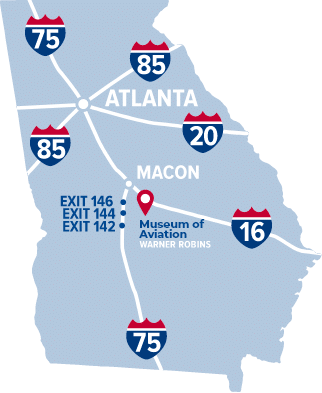The Bone. That’s what its pilots and those close to it call it. I will never forget sitting in my high school administrative office, talking with an Air Force officer who flew the airplane. It was 1997, shortly after the B-1B had been stationed at Robins Air Force Base, and the gentlemen was there to pick up his child. I innocently asked if he worked with the B-1B, to which he replied “Yes, but it’s the Bone, not the B-1. Never call it that.” He was not rude, but I knew he was serious. Bone is not the official Air Force name for the aircraft, Lancer is. But pilots, crew and those who love it refer to it as Bone, created by its designation of B-one. After talking for a few minutes more with the officer, I left with the distinct impression that this was a unique aircraft.
The first time I saw a Bone in flight, I never actually saw it. That might not make much sense, but let me explain. It was shortly after the 116th Bomb Wing had moved to Robins. I had seen the aircraft sitting idle at the base, but never in flight. An interesting note about that is that before hangars were built for the 116th at Robins, the Bones were parked on the old alert pad section of the runway. The alert pad, known as the “Christmas tree” by many, was used by the Strategic Air Command (SAC) B-52’s that were stationed at Robins during the Cold War. Those massive bombers would sit fueled and ready in this area (seen at the lower right corner of the runways here), waiting for the call to race across the world with nuclear payloads should war break out with the Soviet Union. It was interesting for me to see this area put back to use, especially by another massive Air Force bomber. But I digress, back to the story of the Bone in flight.
I was driving up Georgia Highway 247 towards Macon one dark, moonless night. Those of you familiar with the Middle Georgia area know that Hwy 247 runs parallel to Robins. As I drove I heard a faint noise that quickly grew to a fierce roar. A B-1B, excuse me, a Bone, had just taken off from Robins and was headed north in a slightly perpendicular angle to Hwy 247. All I could see of the aircraft were its engines, in full afterburner. Four blue-white volcanoes of fire erupting out of the pitch black sky. Since I have a love for this type of thing, I was ecstatic. If cell phones were as prominent then as they are now I would have been on one immediately telling anyone who cared to hear.
For those of you familiar with the Bone or its engines, there is simply no other noise to compare to four General Electric F101-GE-102 turbofans in full afterburner. The engines produce 30,000 pounds of thrust each when those afterburners are used. For the mathematically challenged like me, that’s 120,000 pounds of total afterburning, pulse quickening thrust. Simply amazing. You don’t just hear this aircraft, you experience it. There is absolutely nothing like it. There is nothing else in the world that I personally know of that sounds more like the sky being ripped apart. The last two times I saw the Bone in flight were fly-bys at a small airshow at the Perry Airport and when a large flight left Robins en-masse on a training exercise. Both times I was deeply impressed with the aircraft and the sound that accompanies it. It is large, with fast lines that give an impression of speed even when standing still.
I could talk about this jet forever. The short time it was stationed here at Robins left me with a great admiration for the aircraft and the crews that fly it. The Bone comes to mind now because I read an article recently that it might be retired early because of Air Force budget concerns. It would be a shame to lose it, and I hope to see it in flight again someday before they are retired. Until then, I have the privilege of walking by the Museum of Aviation’s aircraft every day. The aircraft on display, 83-0069, is marked as 86-0098. 86-0098 was assigned to the 116th. I stop from time to time just to take all 146 feet of it in. Every time I do, my mind can’t help but drift back to that dark Georgia night when I was first introduced to the Bone.
[youtube=http://www.youtube.com/watch?v=jvjqHHdaHXI&feature=related]








